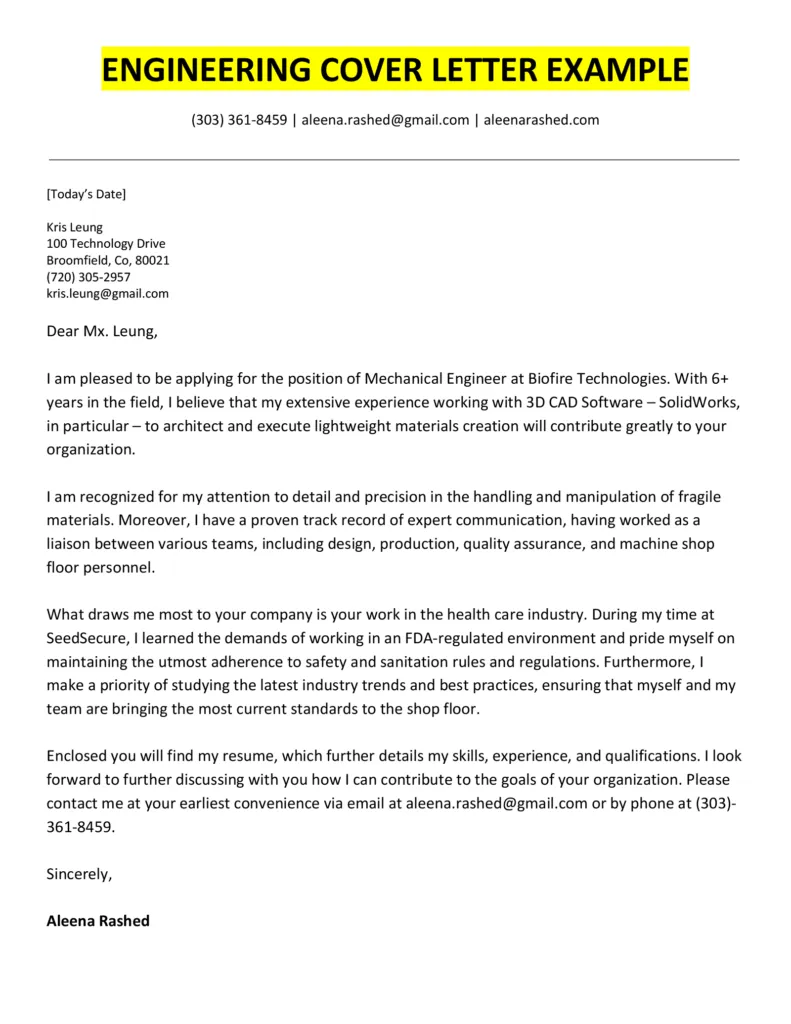Key Components of an Engineering Cover Letter
An engineering cover letter is more than just a formality; it’s your first chance to make a lasting impression on a potential employer. It provides a platform to showcase your technical skills, highlight your achievements, and demonstrate your genuine interest in the position and the company. A well-crafted cover letter complements your resume by offering a narrative that connects your experiences and qualifications to the specific requirements of the job. This guide breaks down the critical elements of an effective engineering cover letter, ensuring you create a compelling document that stands out from the competition and increases your chances of landing an interview.
Header Section
The header is the first thing a hiring manager sees, so it’s essential to get it right. It sets the tone for professionalism and provides key contact information. A clean, organized header is the foundation of a good first impression. Ensure that the information is accurate, up-to-date, and easily accessible. This section should be concise and easy to read, allowing the hiring manager to quickly identify you and your contact details. Proper formatting here shows attention to detail, which is a critical trait in engineering.
Your Contact Information
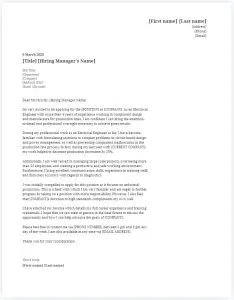
Start with your full name, followed by your phone number, email address, and optionally, your LinkedIn profile URL. Double-check the accuracy of your contact details, especially your email address. Use a professional-sounding email address; avoid anything informal or unprofessional. Make sure your voicemail greeting is also professional. It is important that employers have the easiest time to contact you. The information in this section provides the primary way for the employer to reach out to you for an interview.
Date
Include the date you are writing the cover letter. Place the date below your contact information. This helps the employer know when you wrote the letter and gives context to your application. The format should be formal, such as Month Day, Year (e.g., January 15, 2024). Keeping the date correct is part of showing attention to detail.
Employer Contact Information
Below the date, include the employer’s contact information. This typically includes the hiring manager’s name, title, the company’s name, and the company’s address. If you know the hiring manager’s name, address them directly; otherwise, use a general title like ‘Hiring Manager’. Always verify the correct spelling of the hiring manager’s name and the company name, showing you have taken the time to tailor your application. This section shows that you have done your research.
Opening Paragraph
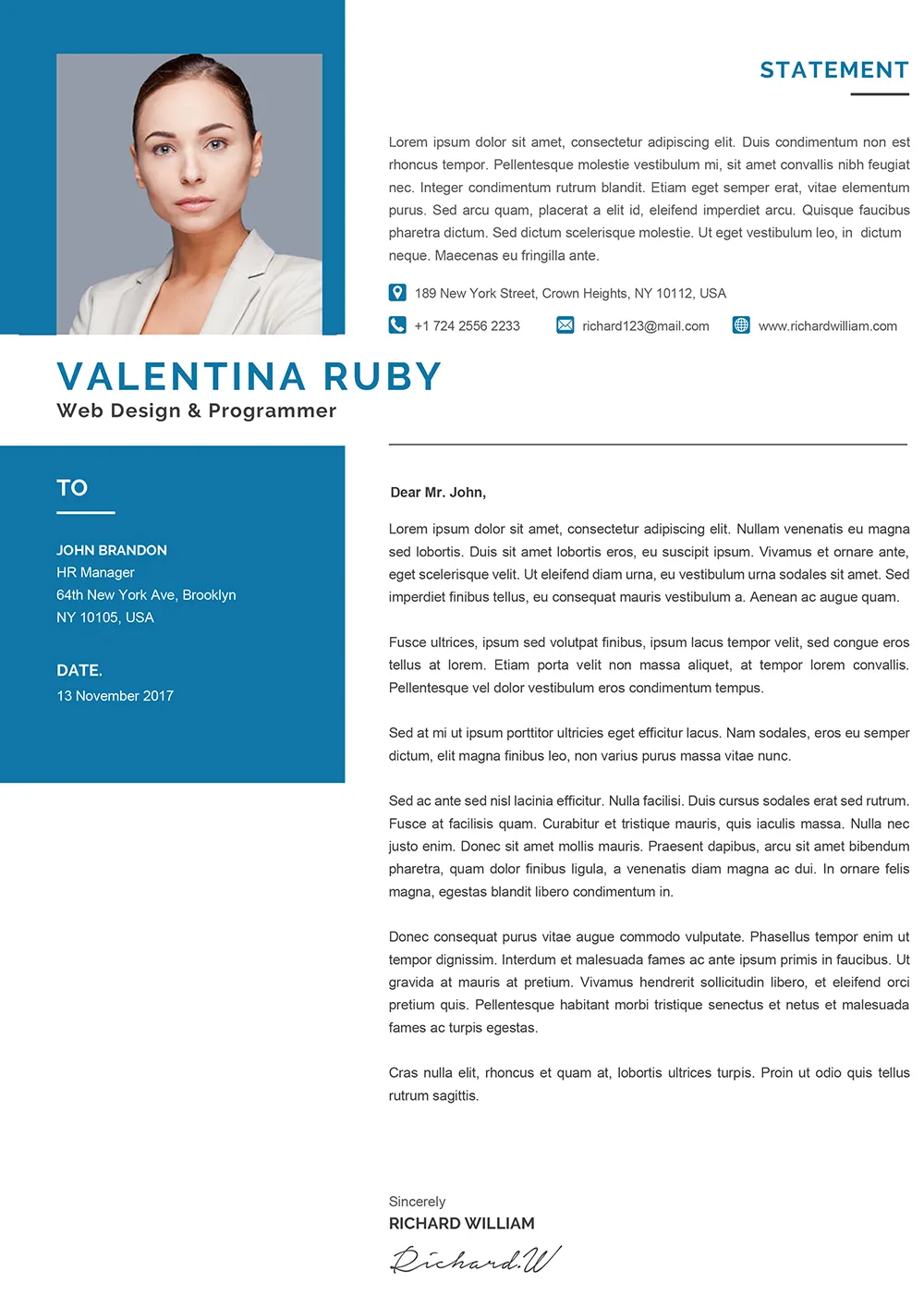
The opening paragraph is your chance to grab the reader’s attention. It should be concise, enthusiastic, and clearly state the position you’re applying for. It should also indicate where you found the job posting. This sets the stage for your qualifications and immediately informs the reader about the purpose of your letter. A strong opening immediately engages the reader and sets the tone for your cover letter. Demonstrate your enthusiasm for the specific role and company.
Addressing the Hiring Manager
Whenever possible, address the hiring manager by name. This shows that you have taken the time to research the company and are genuinely interested in the opportunity. If you are unsure of the hiring manager’s name, you can often find it on the company website or LinkedIn. If you cannot find a name, use a professional greeting such as ‘Dear Hiring Manager’ or ‘Dear [Department Name] Team’. Personalization demonstrates initiative.
Expressing Interest
In the opening paragraph, clearly state the specific position you’re applying for and where you found the job posting. Express your enthusiasm for the role and the company. This helps the hiring manager quickly understand why you are writing and demonstrates your genuine interest in the opportunity. Briefly mention what specifically attracted you to the role or company. This immediate expression of interest demonstrates your proactiveness and enthusiasm for the specific opportunity.
Body Paragraphs
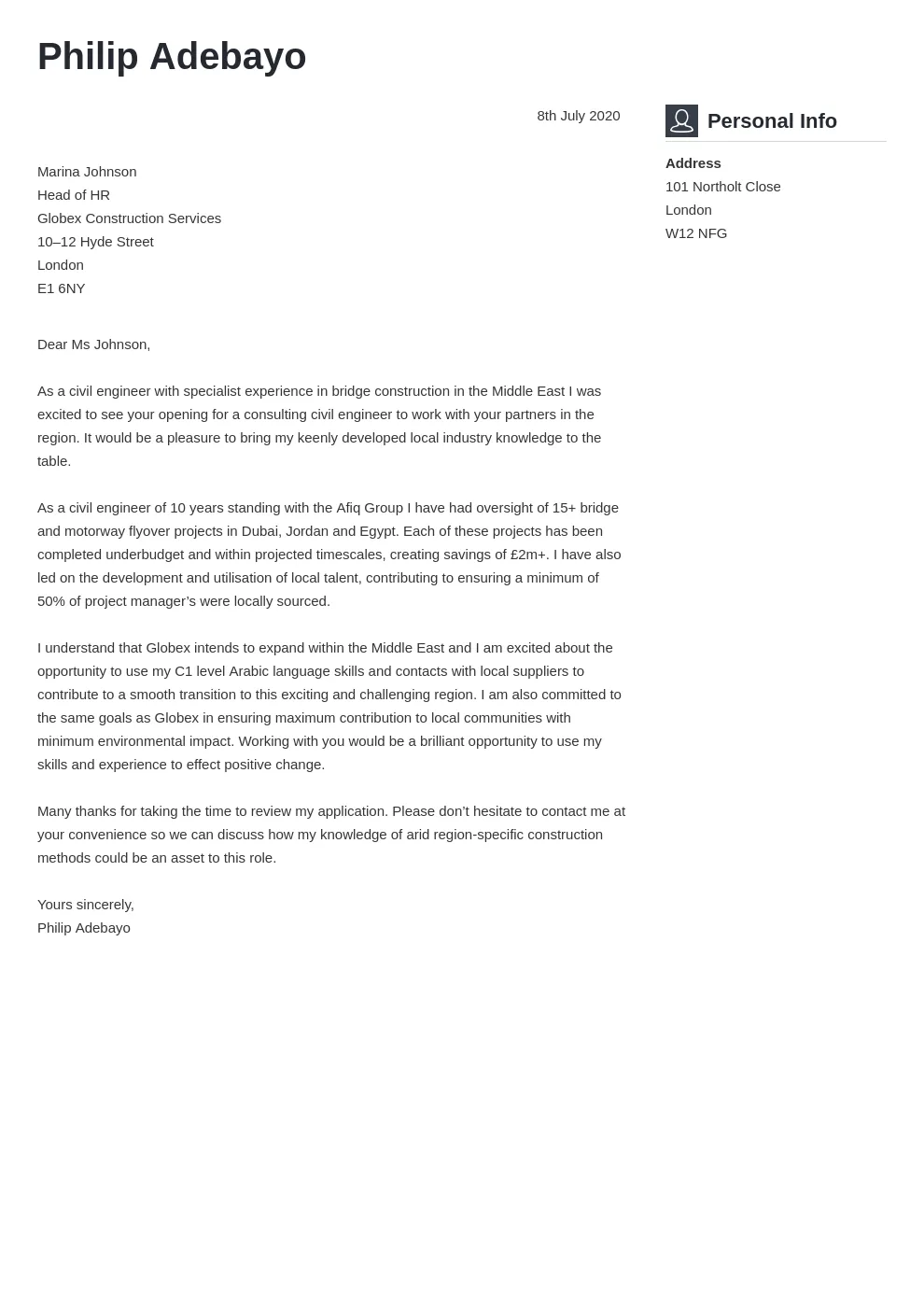
The body of your cover letter is where you showcase your skills, experience, and accomplishments. This section should be well-organized, highlighting how your qualifications align with the job requirements. Use specific examples to illustrate your abilities, and quantify your achievements whenever possible. Structure your body paragraphs to make it easy for the hiring manager to quickly grasp your qualifications. Focus on demonstrating how you can contribute to the company’s goals.
Highlighting Relevant Skills and Experience
Focus on the skills and experiences most relevant to the job description. Use the job posting as a guide, and tailor your cover letter to match the required qualifications. Briefly mention the skills and experience you possess and then use examples to elaborate. Tailoring your cover letter demonstrates your understanding of the job requirements and your ability to fulfill them. Make sure you mention the most relevant skills in the job description.
Showcasing Technical Skills
Clearly state your technical skills. This includes specific software, tools, and engineering methodologies. Provide examples of how you’ve used these skills in previous projects or roles. Highlight skills like CAD software proficiency, knowledge of specific programming languages, or experience with relevant engineering principles. Whenever possible, quantify your proficiency level, such as ’expert in AutoCAD’ or ‘proficient in MATLAB’. Specific examples demonstrate the practical application of your skills.
Demonstrating Problem-Solving Abilities
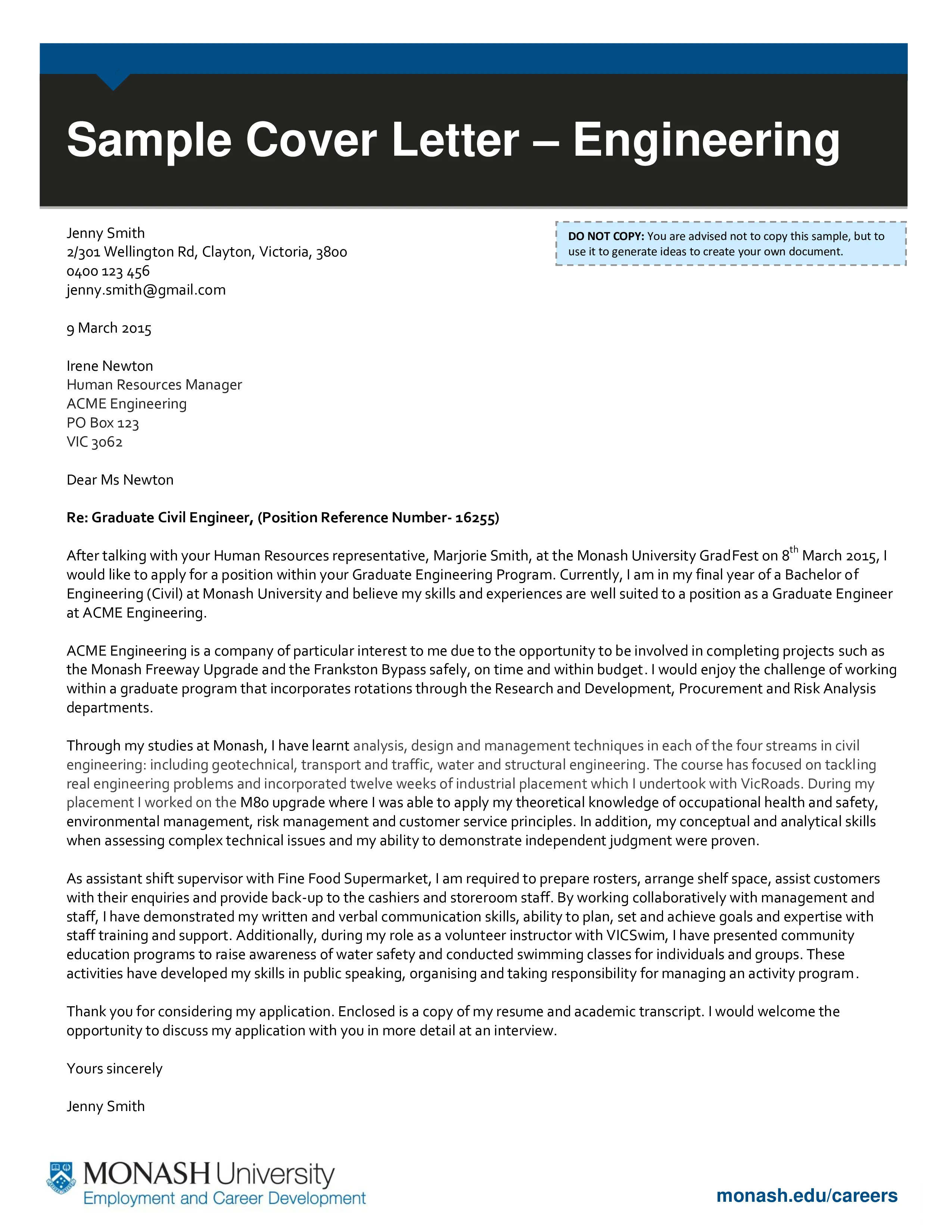
Engineers are problem-solvers, so demonstrating this skill is crucial. Provide examples of how you’ve identified and solved complex problems. Describe your approach, the challenges you faced, and the solutions you implemented. Use the STAR method (Situation, Task, Action, Result) to structure your examples. Quantify your achievements whenever possible, such as ‘reduced project errors by 15%’ or ‘improved system efficiency by 20%’. This will show you can solve the issues and problems that the role involves.
Quantifying Achievements
Use numbers, percentages, and specific data to quantify your achievements. Instead of saying ‘improved efficiency,’ say ‘improved efficiency by 15%’. Whenever possible, provide specific metrics to illustrate the impact of your work. Quantifying your achievements shows the tangible results you have delivered in previous roles. This helps the hiring manager understand the value you bring to the table. Quantifiable results show the measurable impact of your work and the value you can bring to the company.
Illustrating Projects and Accomplishments
Provide brief, concise descriptions of your most relevant projects and accomplishments. Highlight your role, the key challenges, and the results achieved. Focus on projects that align with the job requirements. Your projects and accomplishments should directly relate to the job description. Use the STAR method to structure your explanations for clarity and impact.
Project Descriptions
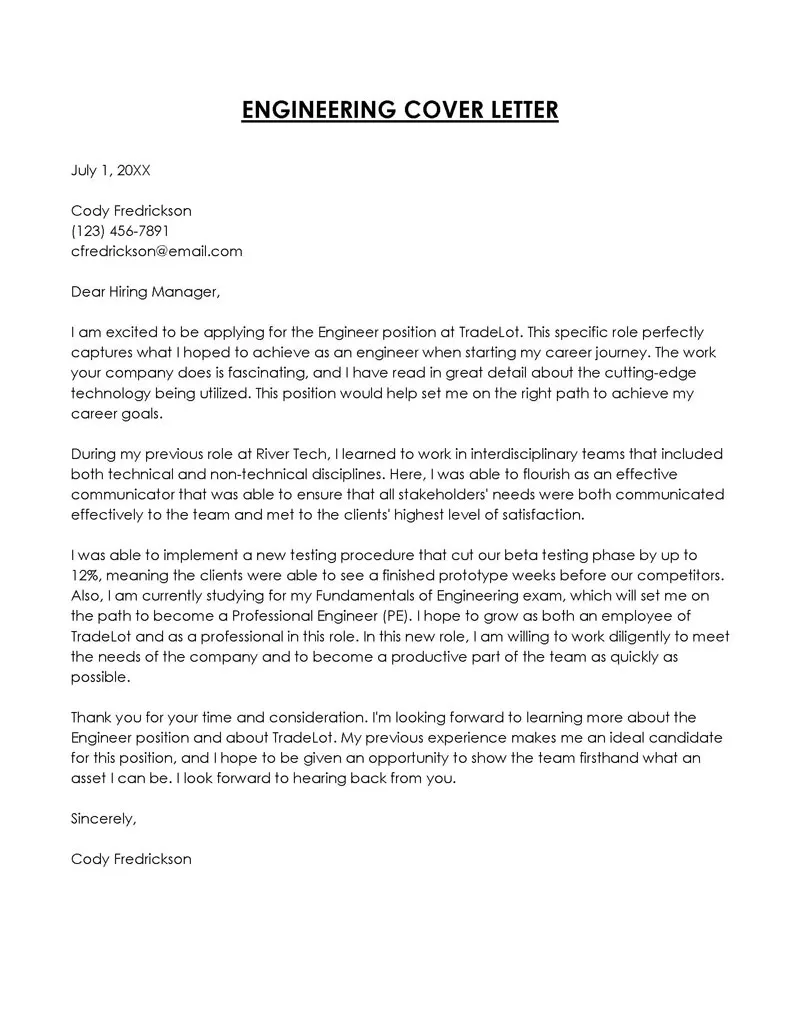
For each project, provide a brief overview, your role, and the key results. Highlight the technologies and methodologies you used. Explain any specific challenges you overcame. Focus on the skills and experiences most relevant to the job description. Keep the descriptions concise, using bullet points or short paragraphs. Each project description should communicate the purpose of the project, your specific contributions, and the final outcome.
Awards and Recognition
If you have received any awards, recognition, or certifications, include them here. This can include academic honors, industry certifications, or project awards. List these achievements concisely, including the name of the award and the date received. These achievements help to demonstrate your drive to go above and beyond what is asked of you. They add credibility and reinforce your qualifications. Awards and certifications validate your skills and dedication.
Closing Paragraph
The closing paragraph should reiterate your interest in the position and the company and include a call to action. Keep the tone professional and enthusiastic. The closing paragraph is your last opportunity to leave a positive impression. Make sure you are enthusiastic and show your excitement for the role.
Reiterating Interest
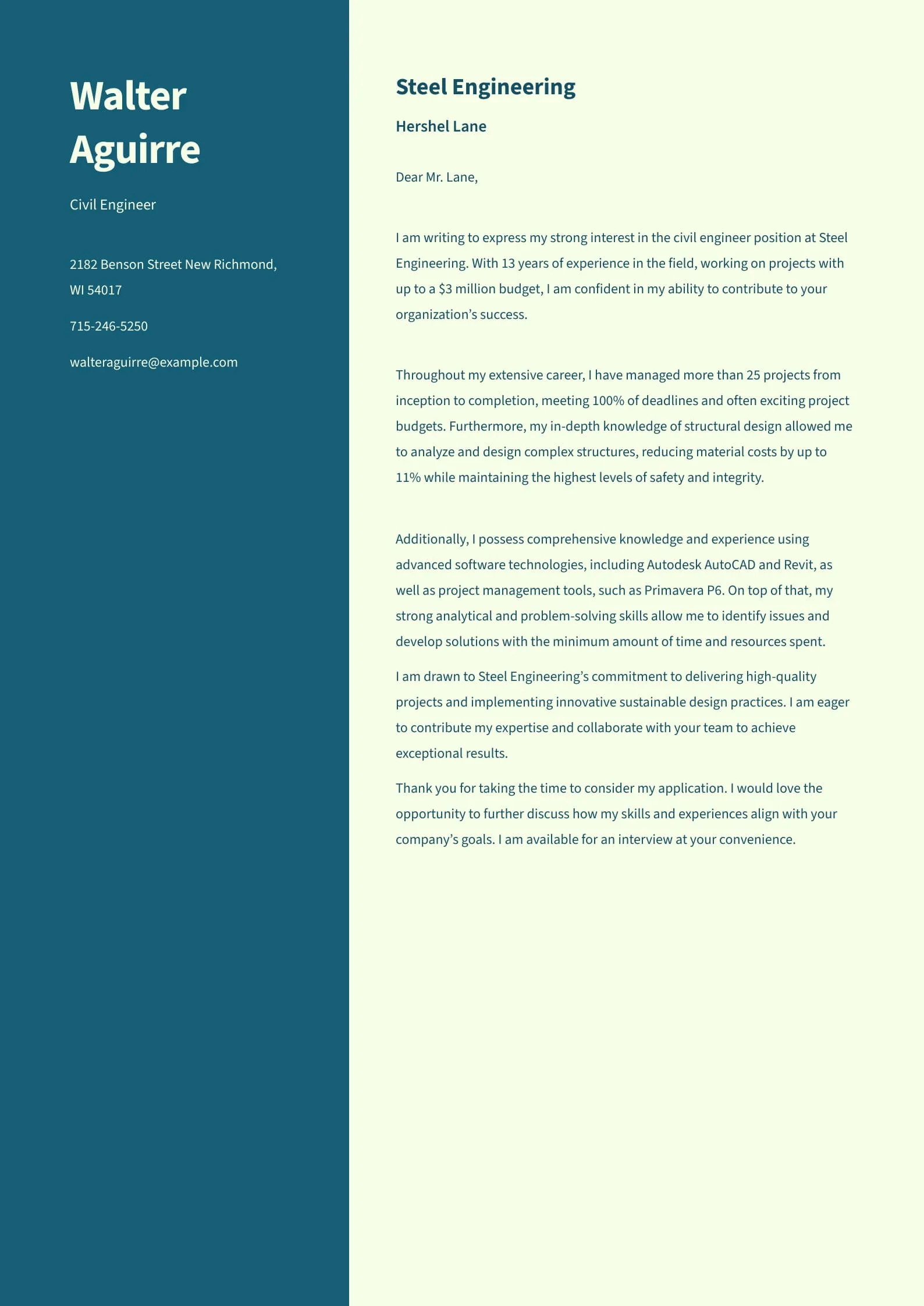
Reiterate your interest in the specific position and company. Briefly restate why you are a good fit for the role. Emphasize how your skills and experience align with the company’s needs. Reiterate your interest in the opportunity, reinforcing your enthusiasm for the position and company. Express your sincere interest and enthusiasm, and reinforce your desire to contribute to the company’s goals.
Call to Action
Include a clear call to action, such as ‘I look forward to the opportunity to discuss my qualifications in an interview.’ Thank the hiring manager for their time and consideration. Provide your contact information again, in case it is easier to contact. A strong call to action encourages the hiring manager to take the next step. Make it easy for them to contact you, and express your anticipation for the interview.
Formatting and Design
The formatting and design of your cover letter are essential for readability and professionalism. A well-formatted letter is easier to read and reflects your attention to detail. Pay close attention to font, margins, spacing, and overall layout. A clean and professional layout makes your cover letter more appealing. Ensure your cover letter is easy to read and visually appealing. A well-designed cover letter makes a good first impression.
Font and Font Size
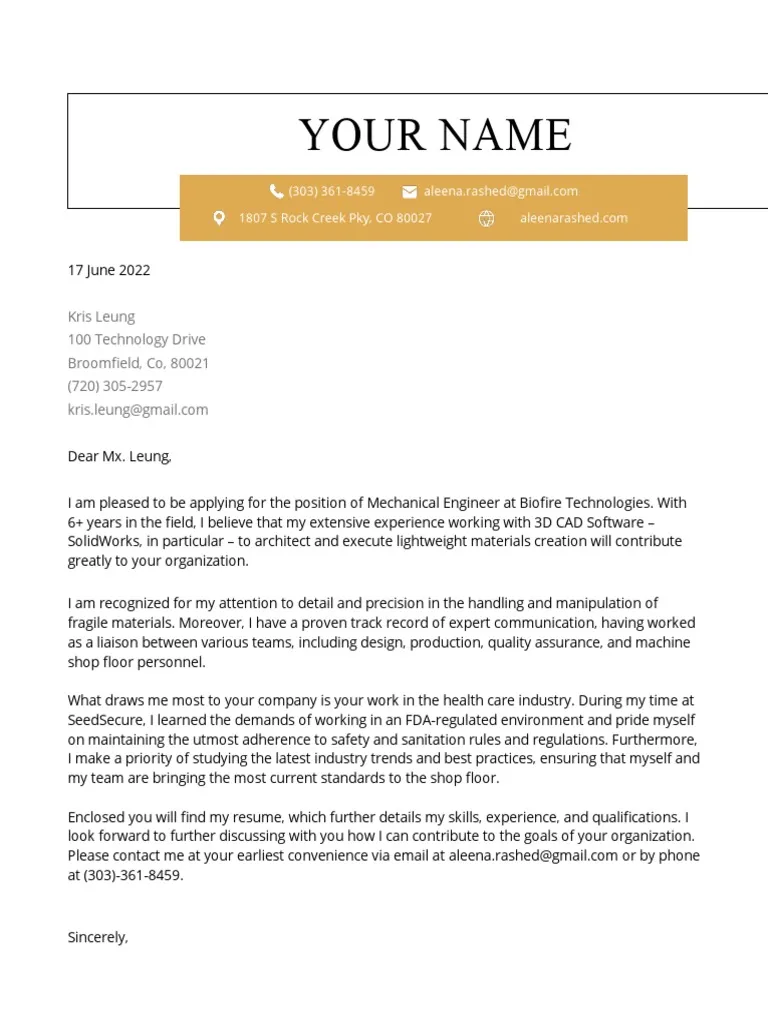
Choose a professional and readable font, such as Times New Roman, Arial, or Calibri. Maintain a consistent font size, typically between 10 and 12 points. Avoid using overly decorative or unusual fonts. A clear and easy-to-read font will make your cover letter more accessible. Maintain consistency in font and size throughout the document.
Margins and Spacing
Use standard one-inch margins on all sides of your cover letter. Use single or 1.15 line spacing for the body of the letter and double spacing between paragraphs. Proper margins and spacing improve readability and give the document a clean, uncluttered look. These formatting choices ensure the document is visually appealing and easy to read.
Proofreading and Editing
Proofreading and editing are crucial steps to ensure your cover letter is free of errors. Errors can undermine your credibility and professionalism. Carefully proofread your cover letter for grammatical errors, spelling mistakes, and punctuation issues. Consider using grammar and spelling check tools, but also read the letter multiple times yourself. Have a friend, colleague, or career counselor review your cover letter before submitting it. A well-edited letter will make a positive impression on the hiring manager.
By following these guidelines, you can create a powerful engineering cover letter that showcases your skills, experience, and achievements effectively. Remember to tailor your cover letter to each specific job application, highlighting the skills and experiences most relevant to the position. A well-crafted cover letter can significantly increase your chances of landing an interview and ultimately securing your desired engineering role. Good luck with your job search!
